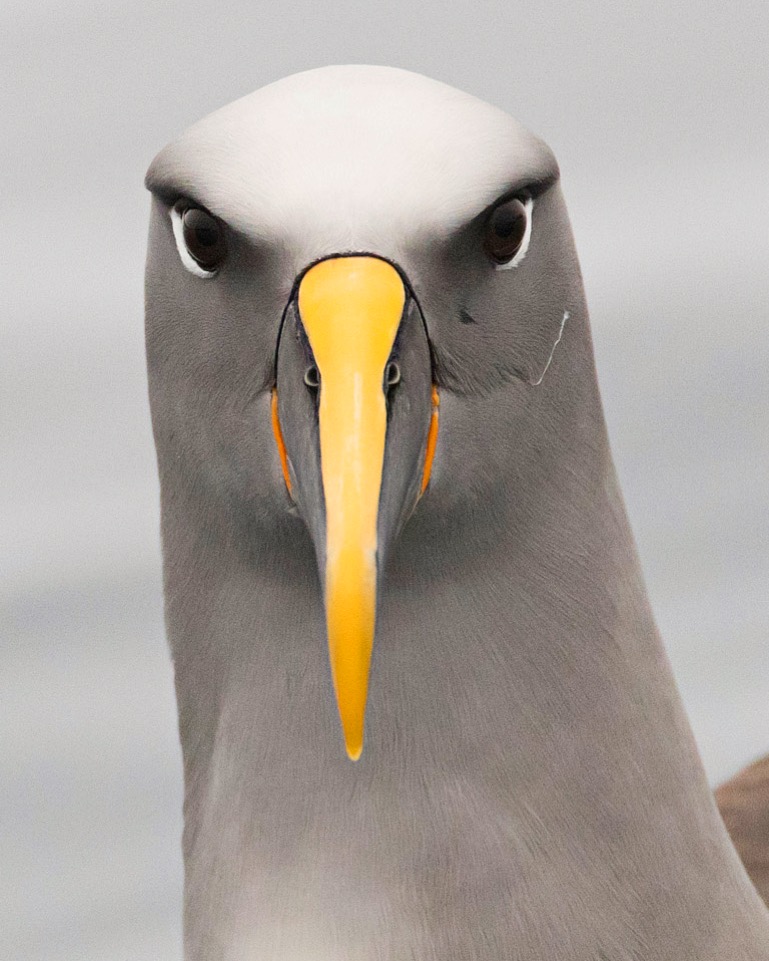Buller's Albatross
Thalassarche bulleri platei
| Datum | 27 November 2017 |
|---|---|
| Locatie | Chatham islands, New Zealand |
| Fotograaf |
|
| Bekeken | 5343 × |
Foto twee jaar geleden genomen tijdens de zogenaamde Birding Down Under expedition cruise naar de Subantarctische eilanden van Nieuw Zealand. Droombestemming en dito reis. Meer foto’s van deze fraaie albatros hier. |
Discussie
Marc Guyt
·
16 January 2020 12:01
Voor de liefhebbers, op vrijdag 31 januari geef ik een lezing over de expeditiecruise Birding Down Under (bootreis naar de Subantarctische eilanden van Nieuw Zeeland) in de Roskam in Katwijk.
Meer info op de website van Birdclub Katwijk.
George Sangster
·
25 July 2023 15:48
Quiñones, J, Zavalaga, C & Robertson, CJR 2023. Identifying northern Buller´s albatross (Thalassarche bulleri subsp.) in offshore waters of southern Perú. Notornis 70: 49-59.
The current Buller’s albatross taxa (Thalassarche bulleri bulleri [southern] and T. b. platei [northern]) engage in transpacific migrations from breeding sites on New Zealand offshore islands to non-breeding areas in the south- eastern Pacific Ocean. Both taxa are identifiable from a combination of plumage colour features in the head and bill that are easy to detect at short distance (<15 m). There is also breeding allopatry between the taxa, with the onset of breeding 2.5 months earlier in the ‘northern taxon’. In this study, close-range sightings and captures of lured Buller´s albatross individuals off southern Perú were carried out during two pelagic trips in May–July 2021 onboard a small- scale longline fishery wooden boat (12 m long), during their normal operations when targeting sharks. We report on the presence of 41 Buller´s albatross, of which 40 were recognized as ‘northern taxon’ and one as ‘southern taxon’. The great majority of the ‘northern taxon’ were adults (92.5%), with the remaining identified as sub-adults (7.5%). Birds were sighted between 126 and 223 km offshore west-south-west from the port of Ilo, Perú (17°38.64´S, 71°20.77´W). Birds sighted were preferentially in oceanic areas above the abyssal plain (68% of sightings), with a mean depth of 4,537 m, demonstrating that the ‘northern taxon’ is a truly oceanic species. No birds were observed by us over the continental shelf. Discrimination of ‘northern taxon’ from ‘southern taxon’ is possible from a combination of the plumage colour features in the head and bill. However, identification and comparison of photographs for both taxa taken at sea can be problematic, due to varying light conditions, unless the birds can be drawn close to the photographer using attractants, such as offal discards.
Gebruikers van het forum gaan akkoord met de forumregels.

